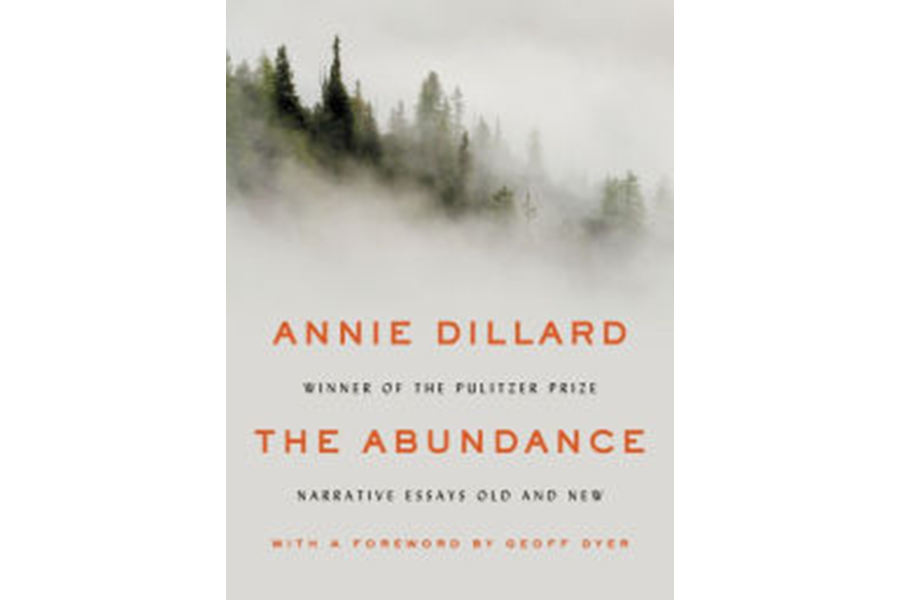'The Abundance' offers an exquisite collection of Annie Dillard's work over decades
Loading...
What a gift Annie Dillard’s The Abundance: New and Selected Essays, is. Over her 40-year career, Dillard has proven herself one of America’s most accomplished stylists and one of its most mesmerizing sensibilities. Her natural descriptions equal those of Thoreau, and her soul is as theological as Marilynne Robinson’s. Her books rival those of Anne Carson in their prickly beauties, and her mind is as geologically curious as John McPhee’s. "The Abundance" collects Dillard’s writing from across her eight books of non-fiction, displaying her brilliance in, well, abundance. It’s true, there isn’t much new here: the most recent piece is more than a decade old. But that is a small complaint to make about such an exquisite collection.
In 1974, Dillard published her first book, "Pilgrim at Tinker Creek" – a "Walden"-like account of Dillard’s time spent in Virginia’s Roanoke Valley. It remains one of the best works of American non-fiction ever written. Emersonian in its restlessness, "Pilgrim at Tinker" Creek is equal parts nature writing and theodicy, attentive to “the inrush of power and light” that nature provides us but also unafraid of looking at “nothingness, those sickening reaches of time in either direction.”
These interests – nature and god, plenitude and emptiness – run throughout "The Abundance." From "For the Time Being" (1999), we get meditations on time, geology, and the Jesuit Teilhard de Chardin; from "Teaching a Stone to Talk" (1982), thoughts on the Catholic mass and Arctic exploration; from "An American Childhood" (1987), a sense for the ecstatic egoism of adolescence and its relation to adult death-in-life: “Perhaps their own selves eclipsed the sun for so many years the world shriveled around them, and when at least their inescapable orbits had passed through these dark egoistic years, it was too late; they had adjusted.”
Dillard’s vision is both dizzyingly cosmic and microscopically local. She wants to show us “an ordinary bit of what is real, the infinite fabric of time that eternity shoots through, and time’s soft-skinned people working and dying under slowly shifting stars.” And yet Dillard also loves to goof around, even and especially about the theologically serious. (“How often,” she wonders, “how shockingly often, have I exhausted myself in church from the effort to keep from laughing out loud?”) She has a lovely chapter on her family’s love of jokes, complete with a few corny howlers: “Fellow comes into a lumberyard …”
In a selection from "The Writing Life," Dillard relates an anecdote. One day, she tells us, “A well-known writer got collared by a university student who asked, ‘Do you think I could be a writer’’? The famous writer responded, “‘I don’t know.… Do you like sentences?’” to which the student reacted with “amazement. Sentences? Do I like sentences? I am twenty years old, and do I like sentences?”
Dillard’s sympathies are, of course, with the well-known writer. Dillard believes that you don’t write for fame or riches (those likely won’t come from the pursuit anyway), and you don’t write because you fancy the author’s life. You write because you love sentences – extravagant and visionary sentences, chiseled and lucid sentences, shocking sentences and comic sentences.
As "The Abundance" makes clear, Annie Dillard writes better sentences than just about anyone alive. Take this description of Puget Sound: “Here is the fringey edge where elements meet and realms mingle, where time and eternity spatter each other with foam.” Or this perfect observation: “When you see fog move against a backdrop of deep pines, it’s not the fog itself you see, but streaks of clearness floating across the air in shreds.” Or this memory of childhood perception: “Adults had misshapen, knuckly hands loose in their skin like bones; it was a wonder they could open jars. They were loose in their skin all over, except at the wrists and ankles, like rabbits.”
I wish that I had the space to quote more. That last detail, “like rabbits,” is so typical of Dillard’s prose: it asks us, indeed forces us, to see the world with more clarity and wonder than we ordinarily do.
For Dillard, seeing is a holy act, one that can be cultivated by the seer (“I must maintain in my head a running description of the present”) but one that also can come unbidden, like the thunderclap of grace. Of this second, grace-filled seeing, Dillard writes, “It was less like seeing than like being for the first time seen, knocked breathless by a powerful glance.” Dillard’s prose has the same effect. Readers of "The Abundance" will recognize Dillard’s description of what it’s like to see, truly and fully, as if for the first time: “I had been my whole life a bell, and never knew it until at that moment I was lifted and struck.”
Anthony Domestico is an assistant professor at Purchase College, SUNY and a columnist for Commonweal.






